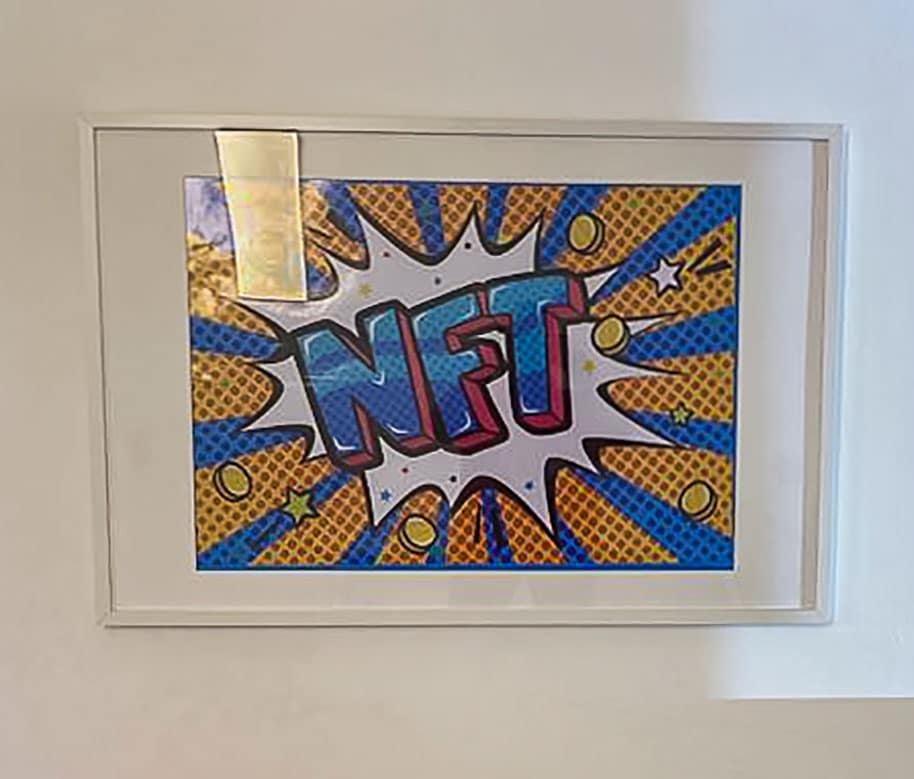Background: What is an NFT?
A non-fungible token (NFT) is a unique digital asset that is built on top of the blockchain system. It is non-fungible in the sense that it is unique in nature: there is only one unique, original NFT. Cryptocurrencies (such as Bitcoin or Ethereum) or conventional fiat currency are fungible because each coin or token or dollar or pound is exactly the same, and therefore interchangeable.
Further, the fact that NFTs are built on the blockchain allows you to track ownership of the asset and verify its authenticity. Hence, while you can screenshot an NFT of a bored ape (similar to making a copy of a painting), the original NFT retains its value because it is a verifiably unique and original and authentic version.
Because it is built on the blockchain, NFTs can be bought, sold, or transferred using cryptocurrency such as Ethereum, Bitcoin, Solona, and Polkadot. The new-found popularity of cryptocurrency has created an immense spike of interest in NFTs. As a result, many artists, singers, and public figures have begun to create NFTs and sell them, oftentimes for large sums of money.
What is a rug-pull?
With NFT’s rise in popularity, investors, speculators, and scammers alike have flooded the market. The concept of a “rug-pull” comes from the expression referring to “having the rug pulled out from under you”. In essence, a person or organization deceives the investor, thereby taking their money.
An NFT rug pull occurs when an NFT developer sells an NFT, or collection of NFTs, and then creates the conditions for the value of the NFT to fall precipitously. For example, if an NFT derives its value as being part of a community or collection, and the developer decides to leave the community, the value of an NFT can collapse.
Types of Rug-Pulls
There are many ways that a developer can “rug-pull” and thereby devalue the NFT. On easy way is by simply disappearing with investor funds before the completion of a project. Further, let’s say an NFT is part of a collection, if the developer disappears without completing the collection, the value of the already sold NFTs may suffer.
Another common rug-pull technique occurs when the NFT is purchased with a particular “scam-coin”. Usually, after significant investment, the developers will sell all off the “scam-coin” they have on hand, thereby devaluing the cryptocurrency (and therefore the NFT) until its worth is a fraction of its original purchase price. Because the developers created the “scam-coin”, they can distribute most of the coins or tokens to themselves. This means that any sell-action by the developer is almost certain to capitulate the price of the crypto, and thereby the NFT.
Other rug-pull methods include:
- A “hard” rug-pull, in which the developer creates a back-door to hack the NFT,
- Cryptocurrency liquidity stealing, in which developers use a smart contract to use a legitimate crypto currency to prop up the value of a “scam-coin” and then devaluing the “scam-coin”
Tax Consequences of an NFT Acquisition
However, while the value of the NFT the investor holds is a fraction of the purchase price after a rug-pull, the investor is likely to incur significant tax benefits after disposing the asset at a loss. While there are no tax consequences from merely holding an asset, when an asset is sold, the gain or loss is “crystallized” and thereby the taxpayer incurs tax consequences. Critically, failure to crystallize the loss through a disposition means that a tax deduction is not available. The Canadian Income Tax Act distinguishes between several sources of income: employment income, business income, property income (which includes investment income), and capital gains. Each of these types of income has its own tax treatment. This is why it is crucial to correctly characterize the type of income (or loss).
The Canadian Income Tax Act generally deems a disposition of property, including an NFT, as either capital property or a business type of property. While selling capital property leads to a capital gain or a capital loss, selling or trading business property, including an adventure in the nature of trade, leads to business income or loss. However, Canada’s Income Tax Act works backwards: first, the Court determines the type of income – capital gain or business income – and then based on the nature of the income, the property is deemed capital property or business property.
In other words, the type of income the property generates upon sale (whether capital gains or business income) determines the character of the property. Hence, it is critical to understand whether the property upon sale gives rise to capital gains (or loss) or business income (or loss).
Canadian Tax Courts have often been tasked with distinguishing between capital gains and business income, and thereby Canadian tax law has amassed a plethora of case law on the matter. Normally, trading produces business income while investing produces capital gains. The Courts have listed a number of factors that help distinguish between them. There is no one factor that is determinative and all relevant factors have to be examined, including:
intention when acquiring the asset. This is generally one of the most important factors;
- Length of ownership – brief ownership of NFTs typically indicates a trading purpose and therefore business income;
- Transaction frequency – extensive buying and selling of NFTs typically indicates a trading purpose and therefore business income;
- Background knowledge – advanced knowledge of NFT markets typically indicates business income;
- Time spent – spending a substantial amount of time studying NFTs and the NFT market, as well as managing a portfolio typically indicates business income;
- Financing – debt-back investment typically indicates business income, and
- Advertising – if the taxpayer makes known that they deal in or an expert in NFTs, that will typically indicate business income.
However, as stated above, the most important factor in this analysis is the taxpayer’s intention when purchasing the non-fungible token. While the intention of the taxpayer is key, the Court can use objective factors – such as the ones listed above – to verify and examine this intention. In Macdonald v Canada, the Supreme Court of Canada stated that the intention of the taxpayer cannot overwhelm the objective analysis. Simply put, if the objective factors heavily favor one type of income, the stated intention of the taxpayer will not (on its own) be enough to prove otherwise.
Tax Consequences of an NFT Rug-Pull
In the context of a NFT rug-pull, the taxpayer’s property will be heavily devalued. While there are no tax consequences for merely owning an asset that has decreased in value, there are tax consequences when the taxpayer disposes of the asset. Critically, the determination of whether the disposition results in a capital loss or business loss will determine the tax consequences. If the factors point towards investment, the result will be a capital loss. If the factors point toward trading, or an isolated adventure in the nature of trade, the result will be a business loss.
Because of the nature of capital and business losses, a taxpayer will usually prefer to incur business losses when possible. Similarly, a taxpayer will usually prefer capital gains. This is because capital gains and losses have a 50% inclusion rate meaning that only half of the gain or loss is taxable. Hence, while business losses would be fully deductible against one’s income, capital losses would not be.
Pro Tax Tip: The first step in being able to deduct a loss as to dispose of the NFT.
Then the most important factor in evaluating whether the sale of an NFT creates a capital loss or business loss is the intention of the taxpayer at the time of purchase. For more advice on the distinction between business income and capital income, contact our expert Canadian tax lawyers who can analyse your Cryptocurrency or NFT portfolio and advise as to the appropriate tax treatment or tax saving strategies including loss crystallization.
FAQ:
- What is an NFT (non-fungible token) rug-pull?
A NFT rug-pull is when the developer or creator of the NFT or NFT community sells an NFT and then creates the conditions for the price of the NFT to drop sharply. This leaves the investor with an NFT worth a fraction of the purchase price.
- Can I claim the loss without selling the NFT?
In order to incur a loss, the Income Tax Act requires a disposition. A disposition occurs when you sell or trade the NFT. After a rug-pull, it is necessary to dispose of the NFT in order to incur a loss in order to receive the tax deduction associated with the loss.
- How do I know if I have capital or business loss?
It is critical to evaluate what the intention of your purchase was, as well as utilizing the factors: length of ownership, transaction frequency, background knowledge, time spent, financing, and advertisement to assess. Our lawyers are experts in crypto tax in Canada and have assisted numerous taxpayers in assessing the type of income
Disclaimer
“This article provides information of a general nature only. It is only current at the posting date. It is not updated and it may no longer be current. It does not provide legal advice nor can it or should it be relied upon. All tax situations are specific to their facts and will differ from the situations in the articles. If you have specific legal questions you should consult a Canadian tax lawyer.”



